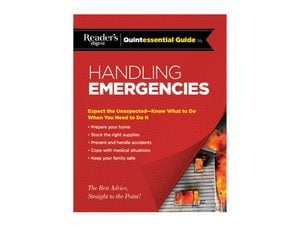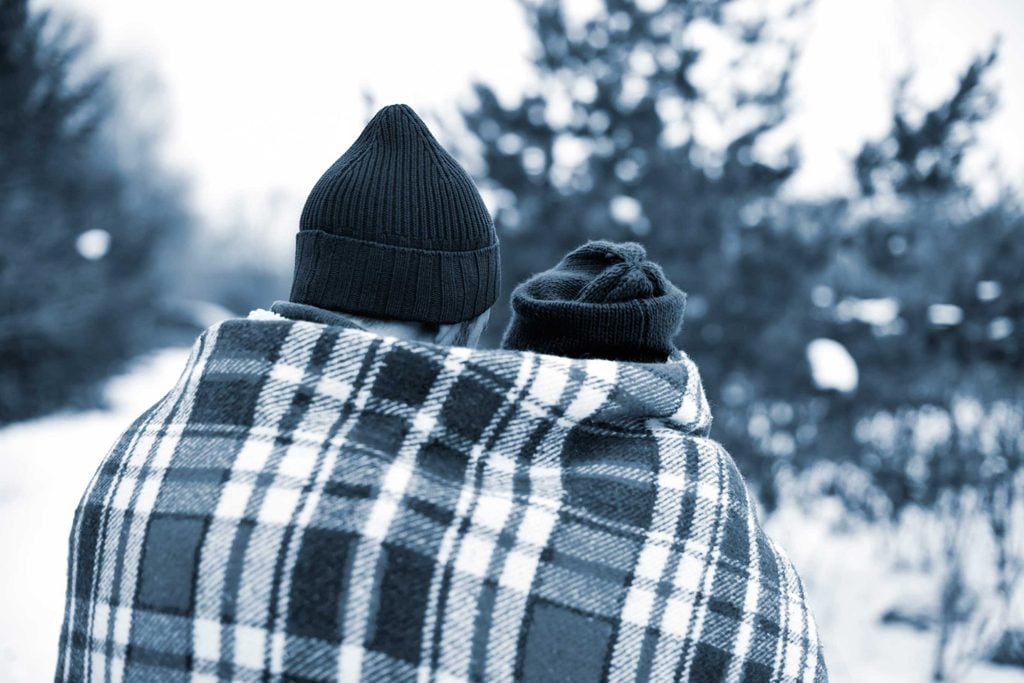First Aid for Hypothermia: 5 Crucial Steps to Follow
Updated: Sep. 12, 2019
Do you know the signs and symptoms of hypothermia? Here's how to warm up a patient safely and prevent their condition from getting worse.
Our editors and experts handpick every product we feature. We may earn a commission from your purchases.
When the core body temperature falls below 95 degrees Fahrenheit, the body shuts down the blood supply to the surface blood vessels to keep vital organs such as the heart supplied with blood. This leads to a condition known as hypothermia. Signs and symptoms of hypothermia are the same whatever the cause or age of the patient. You may also see signs of frostbite on the patient’s fingers and toes.
- Skin feels cold and dry; looks pale
- Lacks energy
- Shivering in the early stages (this is the body’s way of creating heat)
As hypothermia deepens:
- Patient becomes disoriented and starts to behave irrationally; she will become more lethargic and may no longer be fully conscious and alert.
- Eventually the patient will lose consciousness.
- Breaths become very slow and shallow.
- Pulse slows down and gets gradually weaker and irregular; if patient is not warmed up, the heart stops.
How to Handle Someone with Hypothermia
1. Warm up gradually
Only start to warm someone up if there is no risk of her becoming cold again. If you are inside, start to warm the room, or move to a warmer room. Remove any wet clothes. Wrap her in several layers of blankets to trap heat. Put a hat on her head.
2. Don’t give alcohol
This dilates the blood vessels, decreasing the body’s ability to retain heat. Also: Do not warm a patient with direct heat, such as a hot-water bottle, or put her beside an electric fire. Don’t rub or massage a person; in severe hypothermia, there is a risk of heart attack. If a patient becomes unconscious, open the airway and check breathing. Be prepared to begin CPR.
3. Give warm drink and food
If the patient is fully conscious, give her a warm (not hot) drink and a high-energy food such as chocolate for fast energy. You may need to help her eat and drink.
4. Try a warm bath
A healthy adult or older child can be warmed up in a bath if he can climb in and out unaided and there is no risk of him becoming cold again. Note: Do not warm up an elderly person in a bath, as this may send cold blood to the heart or brain too suddenly, and may cause a stroke or heart attack.
5. Get emergency help
Call emergency services as soon as possible. Check and make a note of her level of consciousness, breathing, and pulse regularly until help arrives.
 Get more information about handling health emergencies and natural disasters in the new book Reader’s Digest Quintessential Guide to Handling Emergencies. You’ll get must-know tips and tactics for preparing your home, stocking the right supplies, preventing and handling accidents, coping with medical situations, and keeping your family safe. Learn more and buy the book here.
Get more information about handling health emergencies and natural disasters in the new book Reader’s Digest Quintessential Guide to Handling Emergencies. You’ll get must-know tips and tactics for preparing your home, stocking the right supplies, preventing and handling accidents, coping with medical situations, and keeping your family safe. Learn more and buy the book here.
